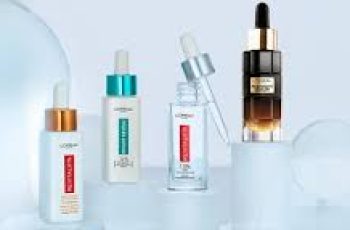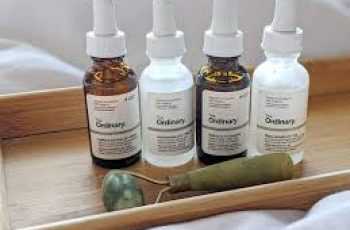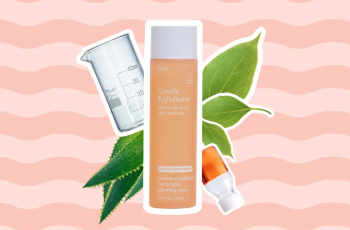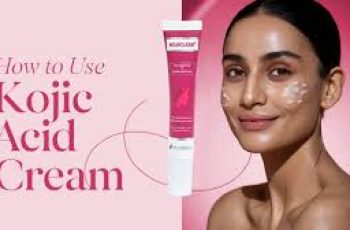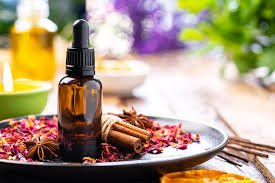
.webp)
.webp)
.webp)
Essential Oils in Skin Care: What You Need to Know
.webp)
.webp)
Essential oils have become a buzzword in the world of skin care, but what exactly are they?
.webp)
.webp)
.webp)
Often touted for their natural origins and pleasant scents, essential oils are much more complex than just fragrant additives.
.webp)
.webp)
Let’s dive deep into the world of essential oils, their extraction, benefits, risks, and how they fit into your skincare routine.
.webp)
.webp)
.webp)
What Are Essential Oils?
.webp)
.webp)
Essential oils are concentrated liquid extracts derived from plants, capturing their aroma and essence. The term “essential” does not refer to nutrients or fats but rather the “essence” of the plant. These extracts come from different parts like leaves, flowers, roots, fruits, or stems.
.webp)
.webp)
.webp)
Unlike typical oils such as olive or sunflower oil, many essential oils don’t contain fats or fatty acids.
.webp)
.webp)
This distinction means they do not provide hydration or strengthen the skin barrier like true oils do. Instead, their primary role is often fragrance, antioxidant, or anti-inflammatory effects.
.webp)
.webp)
.webp)
How Are Essential Oils Extracted?
.webp)
.webp)
Extraction methods vary based on the plant and desired qualities. Common methods include:
.webp)
.webp)
.webp)
Steam Distillation: Steam passes through plant material, carrying volatile compounds that condense into essential oils.
.webp)
.webp)
Cold Pressing (Expression): Used mainly for citrus peels, this process presses the oils out mechanically.
.webp)
.webp)
.webp)
Solvent Extraction: Involves solvents to pull out aromatic compounds, but this is less common for pure essential oils.
.webp)
.webp)
True plant oils, like olive oil, are typically obtained through pressing, retaining fatty acids and lipids important for skin nourishment.
.webp)
.webp)
.webp)
Essential oils often lose these fats during steam distillation, which is why many lack moisturizing properties.
.webp)
.webp)
Are Essential Oils Real Oils?
.webp)
.webp)
.webp)
This question is tricky. While “oil” suggests fatty substances, many essential oils do not contain fats or glycerol backbones, which are typical of true oils.
.webp)
.webp)
Essential oils are named for their aromatic qualities, not their lipid content.
.webp)
.webp)
.webp)
Some essential oils, however, like coconut or jojoba oil, are true oils with fatty acids. These provide hydration and barrier support to the skin.
.webp)
.webp)
Others are “dry” oils (high in unsaturated fats) or “saturated” fats depending on their plant source.
.webp)
.webp)
.webp)
So, in summary: some essential oils are real oils, but many are not.
.webp)
.webp)
Why Are Essential Oils Used in Skin Care?
.webp)
.webp)
.webp)
Essential oils appear in many skin care products for various reasons:
.webp)
.webp)
Fragrance: Their natural scents improve the sensory experience of skin care.
.webp)
.webp)
.webp)
Antimicrobial Effects: Some oils act as natural preservatives, inhibiting bacterial growth.
.webp)
.webp)
Anti-Inflammatory Properties: Certain oils soothe redness and irritation.
.webp)
.webp)
.webp)
Penetration Enhancers: They can help other ingredients penetrate deeper into the skin.
.webp)
.webp)
Not all essential oils are safe or beneficial for skin. Some may cause irritation or allergic reactions, so it’s important to select products carefully.
.webp)
.webp)
.webp)
Popular Essential Oils in Skin Care
Here are a few commonly used essential oils and their typical roles:
Lavender: Calming, anti-inflammatory, often used for sensitive skin.
Tea Tree Oil: Antimicrobial, helpful in acne-prone skin.
Chamomile: Soothing and anti-inflammatory.
Argan Oil: A true oil rich in fatty acids and antioxidants.
Bergamot: Antioxidant and fragrance, but can increase photosensitivity.
Sunflower Oil: A carrier oil rich in unsaturated fats that moisturizes.
Your ideal essential oil depends on your skin type, sensitivities, and desired benefits.
Essential Oils for Different Skin Types
For Sensitive Skin
Essential oils with soothing properties, like green tea extract, chamomile, and argan oil, are preferred. Some new extracts like Saururus Chinensis (Chinese lizard tail) show promise for calming irritated skin.
For Dry Skin
True oils with fatty acids, such as argan and sunflower oil, help nourish and repair the skin barrier. Essential oils without fats may worsen dryness and damage fragile skin.
For Acne-Prone Skin
Look for oils that are non-comedogenic and antimicrobial. Tea tree oil and coconut oil (rich in lauric acid) are known for their acne-fighting properties. Avoid thick, clogging oils.
Are Essential Oils Safe?
Safety depends on the type of essential oil and your skin’s sensitivity. Some oils can cause irritation or allergic reactions, especially when used undiluted or in high concentrations.
If you have acne-prone skin, avoid comedogenic oils that clog pores. Always patch-test new products and consult a dermatologist if irritation occurs.
Certain oils increase photosensitivity and should be avoided before sun exposure. Examples include citrus oils like lemon, lime, bergamot, and grapefruit.
Common Misconceptions About Essential Oils
Many myths surround essential oils. Here are some truths to keep in mind:
Not all essential oils are real oils or contain moisturizing fats.
Essential oils are not a guaranteed source of vitamins or nutrients.
They are not universally beneficial; some can be potent allergens.
Effectiveness varies based on plant source, extraction method, and brand quality.
Some are merely fragrances without therapeutic effects.
Always research individual oils and their uses instead of assuming all essential oils provide the same benefits.
Essential Oils and Hair Care
Essential oils are also popular in hair products. Oils like eucalyptus, camphor bark, lavender, lemon peel, and orange peel extracts contribute fragrance, improve scalp health, or add shine.
Each oil’s effect varies, so choosing the right one depends on hair type and needs.
Essential Oils and Skin Conditions
While evidence is limited, herbalists use essential oils to manage conditions like eczema, psoriasis, rashes, and aging skin.
Dry Skin Conditions: Avoid essential oils without fats; some oils like olive oil may worsen dry skin due to their fatty acid profiles.
Oily Skin: No essential oils directly reduce oil production, but willowbark and wintergreen contain salicylic acid, which helps unclog pores.
Rashes: Anti-inflammatory oils such as lavender and chamomile may soothe allergic rashes.
Aging Skin: Antioxidant-rich oils like clove, cinnamon, and lemon can help combat oxidative stress.
Can You Use Essential Oils with Retinol?
Yes, but with caution. Essential oils vary from thin extracts to fatty oils, which influence retinol absorption.
Oils with anti-redness or barrier-supporting properties, such as argan oil, pair well with retinoids to reduce irritation.
Always tailor your routine to your skin type and consult with a skincare professional.
Summary: Are Essential Oils Worth It?
Essential oils are a diverse group of plant extracts with varying properties and skin benefits. Some are true oils, hydrating and nourishing, while others primarily offer fragrance or antioxidant effects.
While many skin care products use essential oils for their scent and skin benefits, not all essential oils suit every skin type.
Awareness of their nature, benefits, and risks is essential to use them safely and effectively.
